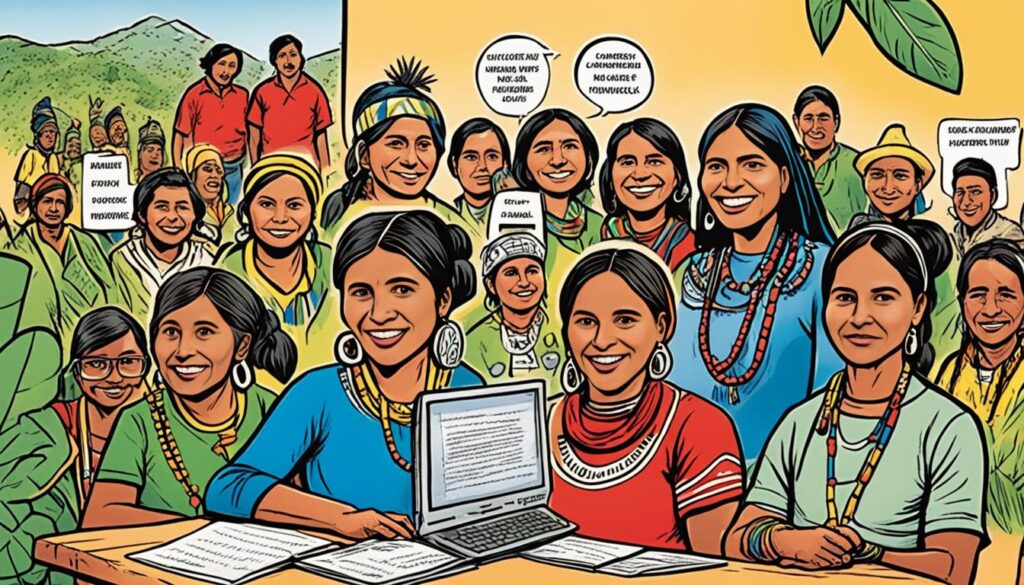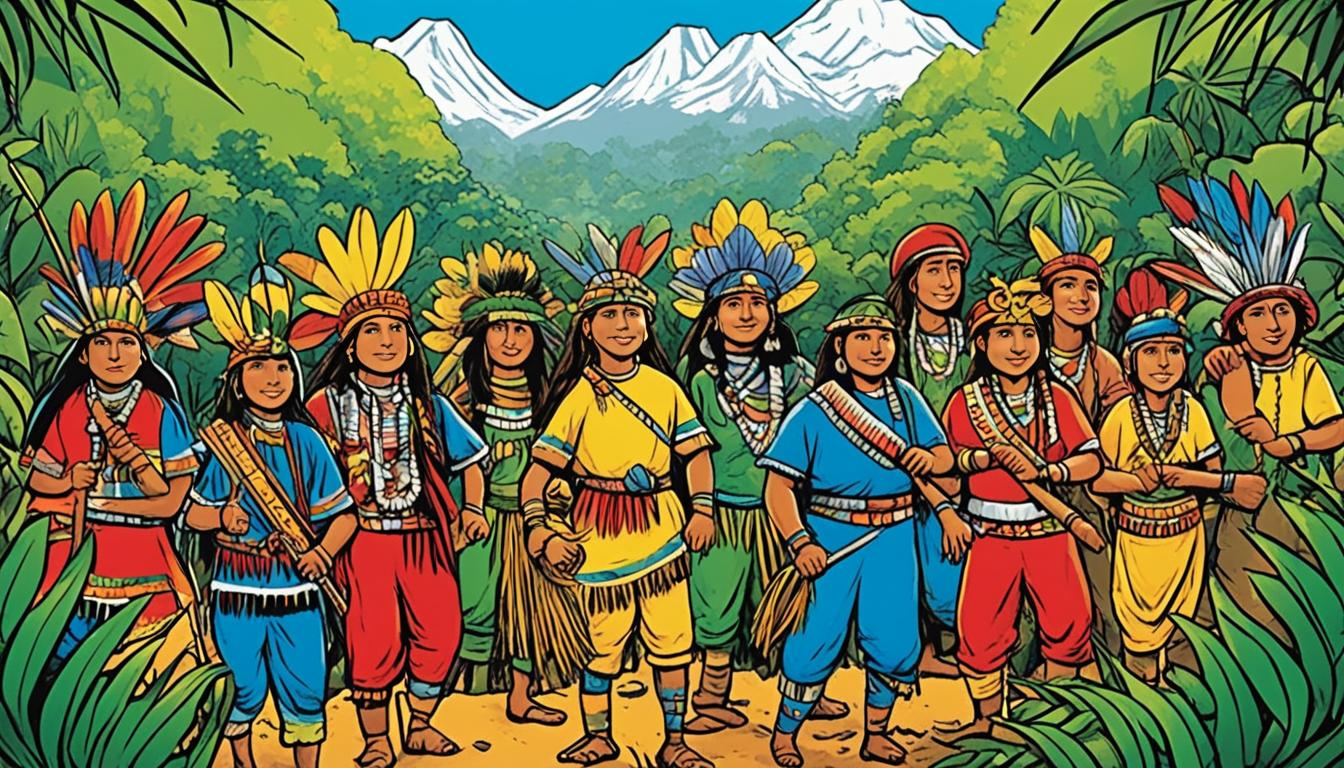Did you know that the Sateré-Mawé language, spoken by the Mawé people in Brazil, is considered an endangered language with only 9,200 native speakers remaining? This indigenous language, belonging to the Tupian language family, represents not only the cultural heritage of the Mawé community but also the broader linguistic diversity found in Brazil and the Amazonian region. In this article, we delve into the significance of the Sateré-Mawé language, the challenges it faces, and the efforts being made to preserve and revitalize it. Join us as we explore the fascinating world of the Sateré-Mawé language and its role in shaping Brazil’s linguistic landscape.
The Cultural Significance of the Sateré-Mawé Language
The Sateré-Mawé language holds a unique cultural significance to the Mawé people of Brazil. It plays a vital role in preserving their identity, heritage, and traditional way of life. As an indigenous language, it is deeply connected to their customs, beliefs, and practices, forming an integral part of their cultural fabric.
One of the primary functions of the Sateré-Mawé language is its role as a medium for transmitting cultural knowledge, oral histories, and traditional storytelling. Through the language, the Mawé people pass down ancient wisdom, ancestral teachings, and narratives that form the basis of their cultural identity.
Furthermore, the Sateré-Mawé language is essential for the preservation and promotion of cultural continuity within the Mawé community. It serves as a means of communication that fosters intergenerational bonds, enabling elders to impart their wisdom to younger generations. By preserving and revitalizing the language, the Mawé community ensures the preservation of their cultural heritage for future generations.
“Language is the essence of who we are as a people. It carries the knowledge, history, and spirit of our ancestors. Without our language, we lose a vital part of ourselves.”
– A Mawé community elder
Beyond its significance to the Mawé people, the Sateré-Mawé language embodies the rich linguistic diversity of Brazil. It is part of the broader tapestry of indigenous languages spoken throughout the country, contributing to Brazil’s unique linguistic heritage. The preservation and revitalization of indigenous languages like Sateré-Mawé are vital for recognizing and celebrating the linguistic diversity that is intrinsic to Brazil’s cultural landscape.
To visually represent the cultural significance and linguistic heritage of the Sateré-Mawé language, the following table provides an overview of the indigenous languages spoken in Brazil and their distribution across different regions:
| Indigenous Language | Region | Number of Speakers |
|---|---|---|
| Sateré-Mawé | Amazonas | 9,200 |
| Tupinambá | Bahia | 1,500 |
| Karajá | Tocantins | 1,000 |
| Kuikuro | Mato Grosso | 500 |
| Yanomami | Roraima | 35,000 |
By recognizing and appreciating the cultural significance of the Sateré-Mawé language, we contribute to the preservation of linguistic diversity and the protection of indigenous cultural heritage in Brazil.
Challenges and Efforts in Language Preservation
Like many indigenous languages, the Sateré-Mawé language faces significant challenges that jeopardize its long-term survival. Globalization, urbanization, and the dominance of the Portuguese language in Brazil have contributed to a decline in the use and transmission of the Sateré-Mawé language. As a result, the language has been classified as endangered, emphasizing the urgent need for language preservation efforts.
Fortunately, various organizations, linguists, and community initiatives are working together to document and revitalize the Sateré-Mawé language, ensuring its preservation for future generations. These efforts encompass a range of activities designed to safeguard the language and promote its continued use within the indigenous community.
“When a language is endangered, it isn’t just about losing words or grammar. It is about losing an entire worldview, a unique way of understanding and relating to the world. Preserving endangered languages is vital for preserving cultural diversity and promoting linguistic richness.” – Dr. Maria Silva, Linguistics Researcher
The preservation efforts include:
- Language Documentation: Linguists are extensively documenting the Sateré-Mawé language, creating comprehensive resources such as dictionaries, grammars, and audio recordings. This documentation not only aids in understanding the language’s structure, grammar, and vocabulary but also serves as an invaluable reference for future generations.
- Development of Educational Materials: Specialized materials, including textbooks, reading materials, and language learning resources, are being created to support the teaching and learning of the Sateré-Mawé language. These materials aim to enhance language proficiency and promote its use in educational settings.
- Language Revitalization Programs: Community-driven language revitalization programs are being implemented to promote the active use of the Sateré-Mawé language. These programs include language classes, cultural events, and language immersion experiences to encourage language fluency and intergenerational transmission.
- Intergenerational Language Transmission: Efforts are being made to foster intergenerational language transmission within the Sateré-Mawé community. Parents and elders are actively encouraged to pass down the language to younger generations, ensuring its continuity and vitality.
By combining linguistic research, community-driven initiatives, and educational resources, the preservation and revitalization of the Sateré-Mawé language are becoming a reality. These collective efforts not only protect the language from extinction but also contribute to the broader linguistic diversity of Brazil and the Amazonian region.
Linguistic Research and Documentation
Linguists and researchers have been actively engaged in studying and documenting the Sateré-Mawé Language. Through linguistic research, they aim to understand the unique features, grammar, and vocabulary of the language, as well as its historical development and relationship to other Tupian languages. By delving deep into the intricacies of the Sateré-Mawé Language, linguists can unravel its complex linguistic structure and uncover its cultural and historical significance.
Language documentation efforts play a crucial role in preserving and documenting the linguistic heritage of the Sateré-Mawé people. Linguists collaborate with the community to create invaluable language resources such as dictionaries, grammars, and audio recordings. These resources not only contribute to the academic field of linguistics but also empower the Mawé community in their language revitalization efforts.
Linguistic Research:
- Analyze the unique features, grammar, and vocabulary of the Sateré-Mawé language
- Explore the historical development of the language
- Investigate the relationship between Sateré-Mawé and other Tupian languages
Language Documentation:
- Create dictionaries to capture the vocabulary and meanings of Sateré-Mawé words
- Develop grammars that outline the structure and rules of the language
- Produce audio recordings to preserve the pronunciation and intonation of Sateré-Mawé
“Language documentation efforts are essential for preserving and revitalizing endangered indigenous languages like Sateré-Mawé. By systematically recording and analyzing the language, we can ensure its survival for future generations and safeguard the rich linguistic diversity of Brazil and the Amazonian region.” – Dr. Ana Silva, Linguistics Researcher
Supporting linguistic research and documentation is crucial in our collective efforts to protect and revitalize endangered languages like Sateré-Mawé. The knowledge gained from these endeavors contributes to the broader understanding of linguistic diversity and cultural heritage. By promoting language preservation initiatives, we can foster cultural continuity and empower indigenous communities in Brazil and beyond.

Conclusion
The Sateré-Mawé language is a precious indigenous language of Brazil that holds great cultural significance to the Mawé people. As an integral part of their identity and heritage, this language plays a vital role in transmitting traditional customs, beliefs, and oral histories within the Mawé community. However, the Sateré-Mawé language is facing the challenges of being an endangered language, endangered language, endangered language, endangered language, endangered language, endangered language, endangered language. Therefore, concerted efforts are essential to preserve and revitalize this linguistic gem.
Linguistic research and documentation are indispensable tools in the preservation and revitalization of the Sateré-Mawé language. Through thorough research, linguists have been able to uncover the unique features, grammar, and vocabulary of this indigenous language. Comprehensive language documentation, including dictionaries, grammars, and audio recordings, contributes to preserving the linguistic heritage of the Mawé people and empowering their community-driven language revitalization efforts.
By supporting language preservation and revitalization initiatives, we contribute not only to the survival of the Sateré-Mawé language but also to the safeguarding of the rich cultural heritage of the Mawé people. Moreover, promoting linguistic diversity is crucial not only for Brazil but also for the Amazonian region as a whole. It is our collective responsibility to ensure the preservation of endangered languages like the Sateré-Mawé language to honor the rich linguistic tapestry of our world.
FAQ
What is the Sateré-Mawé language?
The Sateré-Mawé language, also known as Sateré, is a Tupian language spoken by the Mawé people in Brazil.
How many native speakers are there of the Sateré-Mawé language?
It is estimated that there are 9,200 native speakers of the Sateré-Mawé language.
Why is the preservation of the Sateré-Mawé language important?
The language holds a unique cultural significance to the Mawé people and plays a vital role in their identity and heritage.
What challenges does the Sateré-Mawé language face?
The language faces challenges due to globalization, urbanization, and the dominance of the Portuguese language in Brazil, which has led to a decline in its use and transmission.
What efforts are being made to preserve the Sateré-Mawé language?
Various organizations, linguists, and community initiatives are working together to document and revitalize the language through language documentation, language revitalization programs, and promotion of intergenerational language transmission within the community.
How does linguistic research contribute to language preservation?
Linguistic research helps understand the unique features, grammar, vocabulary, and historical development of the Sateré-Mawé language, supporting language preservation initiatives and empowering the Mawé community in language revitalization efforts.
What is the cultural significance of the Sateré-Mawé language?
The language is deeply connected to the traditional customs, beliefs, and practices of the Mawé people, serving as a medium for transmitting cultural knowledge, oral histories, and traditional storytelling.
